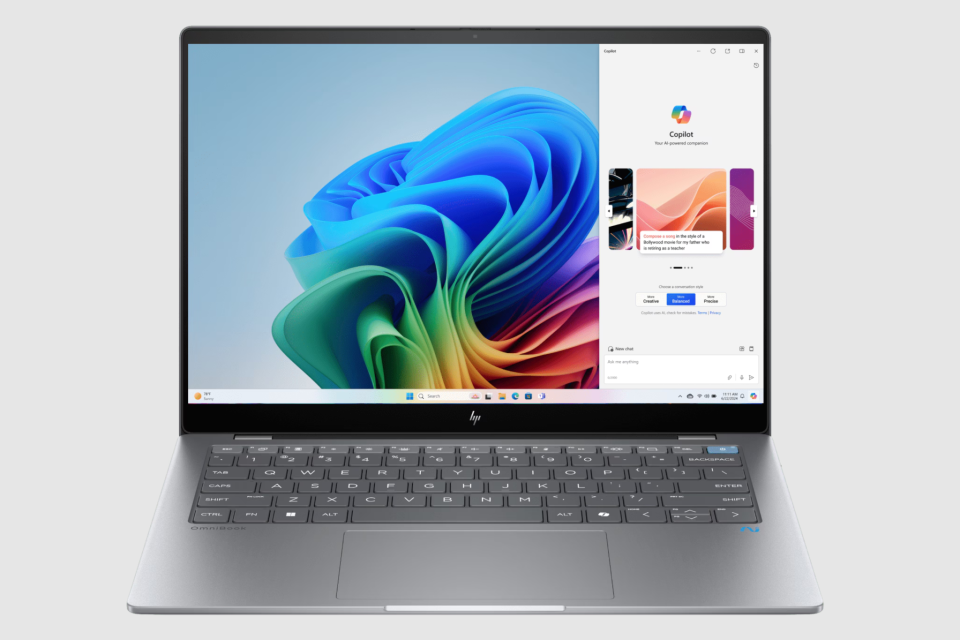Microsoft’s Copilot+ push could be a pivotal moment in the story of the PC

Last October, Qualcomm announced a new Arm-based chipset for laptops, the Snapdragon X Elite, which it claimed would do two things: dethrone Apple’s M-series chips as the best choice for people wanting both significant power and battery life; and make on-device generative AI a mainstream reality in the desktop world.
At the time, the new Snapdragon chipset looked promising, but it was only yesterday that the world got to see how big this push will be, with Microsoft unveiling new “Copilot+” laptops powered by the Qualcomm product. Lenovo, Samsung, Dell, HP, Acer, and Asus will introduce their takes on the Copilot+ PC around a month from now, all featuring either the X Elite or the slightly less powerful X Plus, which supposedly has the same AI performance as its sibling.
“I won’t be fully convinced until I’ve spent enough time with one of these new Copilot+ PCs, but everything Microsoft showed me around performance and battery life looks lightyears ahead of the Arm-powered Windows laptops that existed before today,” The Verge’s Tom Warren cautiously enthused after a Microsoft briefing. “If everything Microsoft showed me holds up in real-world testing, this is a monumental moment for Windows laptops—with just as big an impact as a new release of Windows itself.”
Warren is not wrong—this really could be a pivotal point in the PC story.
If the Copilot+ hardware push works as planned, the most obvious loser would be Apple, whose M-series chips have in recent years provided a huge selling point for MacBooks. Windows PCs being able to catch up on the power-plus-longevity front would be a huge deal for Microsoft. And if they also prove more capable at handling on-device generative AI, that would be yet another way in which Apple is struggling to keep up in the AI field. (Keeping AI on-device has privacy benefits, and is just plain faster than having to access the cloud when it comes to simple tasks like translation and summarization.)
Another big loser in this scenario is Intel, which increasingly looks like a legacy company entering its twilight years. This isn’t the first time that Intel’s x86 processor technology has been threatened by Arm’s rival technology in the Windows PC space, but Microsoft’s support for Windows on Arm has always seemed half-hearted, with developers left unsure of how much they should commit to the concept.
That doesn’t seem to be the case anymore, with Microsoft enthusiastically touting buy-in from developers like Adobe and BlackMagic Design, whose products are wildly popular with the MacBook-toting creative crowd. “Come on over to Windows; it’s finally running on the kind of chip that suits your needs,” Microsoft seems to be saying.
As for Qualcomm, the venerable chipmaker has a massive but brief window of opportunity here, as it has an exclusivity deal with Microsoft that makes it the sole provider of Arm-based processors for Windows PC, but only until the end of this year. So while its latest Snapdragon chipsets are ubiquitous in this first wave of Arm-based Copilot+ PCs, that probably won’t remain the case in future waves, with the likes of Nvidia and AMD reportedly preparing to enter the fray. Qualcomm will definitely be hoping that the first wave catches the public’s imagination, showing that its Snapdragon processors—which have mostly been deployed in cheaper and less powerful laptops until now—can shine on high-end devices.
So in short, there’s a lot riding on this moment for a lot of companies. More news below.
David Meyer
Want to send thoughts or suggestions to Data Sheet? Drop a line here.
This story was originally featured on Fortune.com

 Yahoo Finance
Yahoo Finance 